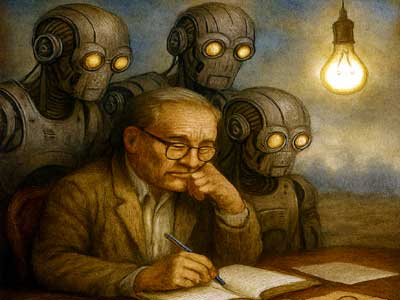The political temperature is soaring — slogans fill the air, enthusiasm has gripped the streets, and hearts are aflame. From Patna to Purnea, one question echoes everywhere — “Who this time?”
Amid November’s cool breeze, Bihar has turned once again into a battlefield. It’s Nitish Kumar’s tired stability versus Tejashwi Yadav’s raw energy, a contest not just for power, but for pride and existence. This election is not merely a wager for office, but a storm of public opinion, where every vote could prove explosive.
Read in Hindi: बिहार में चुनाव, सियासी दंगल या लोकतंत्र की अग्नि परीक्षा!
The Bihar Assembly elections scheduled for November 6 and 11, with results on 14, are being seen as more than a political competition; they are a major test of democracy. Voting will take place on 243 seats, and over 74.2 million voters, including 1.4 million new ones, will decide who sits on Bihar’s throne: Nitish Kumar’s NDA or Tejashwi Yadav’s INDI Alliance.
At present, the current seems to favour the NDA. The JDU-BJP coalition, as in the previous Lok Sabha polls, appears organised and confident. According to NewsX and ABP surveys, the NDA is likely to win between 150–160 seats, comfortably above the majority mark of 122. The BJP hopes to emerge as the single largest party, buoyed by its strong showing in the 2024 Lok Sabha elections, where it won 30 of Bihar’s 40 seats.
Nitish Kumar still enjoys the title of ‘Sushasan Babu’. Despite being in power for more than two decades, his image as a pragmatic and steady leader remains intact. His work on law and order, road networks, and women’s empowerment has given him credibility. BJP’s central leaders, especially Amit Shah, highlight the Modi government’s welfare schemes as ‘game changers’, such as the ₹10,000 annual support for women and skill development programs for youth.
On the other hand, the INDI Alliance faces a tough challenge. Tejashwi Yadav has campaigned on unemployment, education, and the slogan of ‘change for every Bihari’. His influence is visible among the youth, particularly urban voters and first-time voters. However, the lack of unity remains the biggest hurdle. His brother, Tej Pratap Yadav, has floated his own party, Jan Shakti Janata Dal, creating a rift within the Yadav vote bank.
Meanwhile, Prashant Kishor’s Jan Suraj Party has entered the fray as a third front. Though its projected vote share is low, it could still dent the opposition’s base. Kishor is focusing on anti-corruption and development-driven politics, drawing appeal among young voters.
Political commentator Prof Paras Nath Chaudhary observes that the opposition’s attempt to corner the Election Commission has been largely unsuccessful. “The biggest controversy in this election revolves around the Election Commission’s Special Intensive Revision process, aimed at cleaning voter data and removing duplicate names. However, irregularities linked to Aadhaar linkage triggered disputes. The Commission, for transparency, has introduced measures such as 100 per cent webcasting, newly designed EVMs, and special observers, but distrust among voters persists.”
According to Bihar sociologist TP Srivastava, the most decisive force this time is the youth electorate, roughly 14 million voters. They are looking beyond caste equations, seeking jobs, education, and opportunity. The youth are voting on the basis of progress, not mere slogans. The role of Chirag Paswan and several ‘vote-divider’ groups remain unclear.
Analysts point out that Bihar has entered a new era of digital campaigning, from Instagram reels to WhatsApp drives. Young leaders are visibly active on social media, while grassroots efforts like ‘Panna Pramukh’ and ‘Yuva Samvaad’ programs are reinforcing booth-level outreach.
If the NDA returns to power, it may mark not only Nitish Kumar’s final term but also an opportunity for the BJP to strengthen its grip over Bihar. On the other hand, a defeat for the INDI Alliance bloc could trigger shifts in opposition politics and raise questions over Tejashwi Yadav’s leadership.
Ultimately, this Bihar election is not merely a game of regime change; it is a test of how mature the Indian democracy has become. Every vote counts here, every inclusion or deletion from the list, every booth tally, every promise made. This election will decide whether Bihar chooses stability or change.
Bihar actually needs a firm administrator like Yogi Adityanath in UP, is a chant heard frequently in meetings in Bihar. Some analysts are also wondering whether youth unrest in Nepal could impact the coming elections. A lot is being said about Bihari migrants and the money order economy, but how far these will impact political equations is anybody's guess!


















Related Items
Complex questions still need to be answered by people, not machines
Gender quotas, an effective way to challenge power structures
People eat less meat to benefit their own health, not for environment